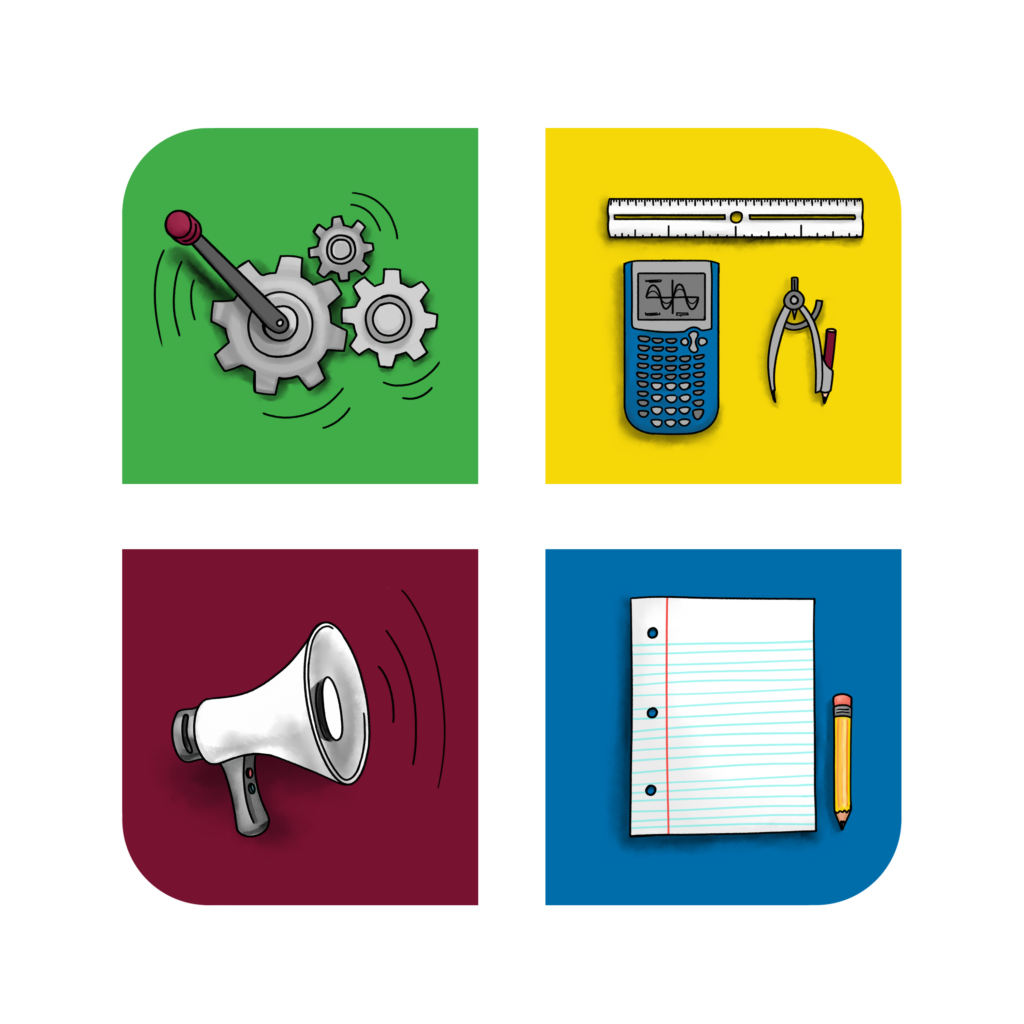John Hayes, Eagle River, WI, johnhayes@cpm.org
Many units in a CPM text have at least one lesson where students are required to work as a team to create a poster. Posters can accompany some mathematical tasks that are really quite challenging for a student. Adding to that challenge is the necessity for a team to work together to create a finished product that will be displayed for the rest of their peers to see. In some classrooms, the poster is marked or graded to “double down” on student accountability. After a poster assignment the questions teachers should be asking themselves are:“Did this activity generate more mathematical discussion?” and “Was this an activity that produced a high level of productive struggle?”
From an outside point of view, when I watch students working on a poster activity in a classroom, I get a sense of a rhythm for student effort. Student productivity, discussion, and mathematical thinking seem to be inversely proportional to the proximity of the teacher from their work space. There is one exception to the inverse proximity rule and that is right after the teacher says, “Five minutes left!” At that point productivity seems to be maximized no matter where the teacher is located. In addition, because many posters involve connections among tables, graphs, rules, and situations, students seem almost programmed to produce these four web items while the teacher frantically asks them repeatedly to show their connections.
So what can we do to make poster days more meaningful? Since posters are risky for students we need a culture of risk-taking in class. Yes, you guessed it, with any quality math thinking it is helpful to have a growth mindset. In particular, students cannot be afraid to be wrong. I propose that teachers explain to students prior to the poster that they want some risk-taking during poster creation. This could be structured somewhat like a Listening Post. The Facilitator could ask the Resource Manager, “How are these representations connected?” As the Resource Manager is explaining, the Reporter Recorder is noting the explanation the poster. Then students could rotate the responsibilities in the team. Right or wrong, one of the team members’ thoughts are being recorded on the poster.
Another thought is to ask teams to generate questions on their poster. If there is something they do not understand as they are building the poster, students could write a question right on the poster or on a sticky note attached to the poster. Now, during the Gallery Walk to showcase the poster activity, students can help other teams answer the questions that are on the poster. This can also be used as a way to check for understanding on a topic.
At my school, we had a wall of fame where we would put posters that we (the department) thought exemplified exceptional math reasoning in a clear and concise way. I will admit, the impact of the wall of fame was minimal. However, it served to model for students what teachers hope to see on a poster. On that wall, sometimes we would leave posters up that had mistakes so we could take our class out in the hallway to discuss whether or not they see a mistake.
All of these techniques may help students take more risks on their posters. They also may provide opportunities for students to learn from their mistakes. If all of our teams produce cookie cutter posters without mistakes because the teacher has carefully scaffolded the content on them, then students will have little opportunity for quality discussions. Encourage your students to take risks on their posters and celebrate mistakes during the Gallery Walk. In fact, you may need to model the discussions that should be happening during a Gallery Walk so students get used to identifying mistakes and then giving effective feedback. Work on this early in the year, and your poster days will be an activity you look forward to.
